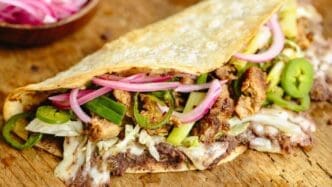In the world of barbecue, the choice of smoking wood is often considered pivotal in crafting that distinct smoky flavor many crave. But does the type of wood truly make a difference? This examination delves into the nuances of using different smoking woods, questioning the long-held beliefs regarding their impact on taste.
The essence of barbecue lies in the smoke, derived from the wood used during the cooking process. Smoking wood, when dried to a specific moisture level, emits flavorful smoke that penetrates the meat, imparting a distinct taste. This study involves a comparison of apple wood, Hickory, and mesquite, each known for varying intensities of smoke flavor.
Apple wood, favored for its light and sweet smoke, pairs well with pork and poultry, offering a mild flavor profile. Meanwhile, Hickory wood, abundant in the Eastern United States, presents a more versatile option with moderate smoke intensity. On the other end of the spectrum, mesquite is renowned for its intense smokiness, often recommended for shorter cooking durations.
The investigation included tests using different proteins: pork butt, salmon, and steak. Each protein was cooked using apple wood, Hickory, and mesquite, allowing for an analysis of how the smoke from each wood affected the meat’s flavor. The process utilized identical cooking conditions, including the same amount of charcoal and wood, ensuring a consistent heat and smoke application.
During the experiment, it was observed that apple wood ignited more easily compared to the others, and significant differences in aroma were noted, particularly with mesquite. As the proteins cooked over the wood smoke, divergences in flavor began to emerge.
The results revealed that while distinctions among the wood types were apparent in shorter cooking times, prolonged exposure to smoke seemed to reduce these differences, especially with the pork butt. Intriguingly, the more subtle flavors of apple wood appeared to reign supreme in traditional smoking scenarios, especially when applied to salmon.
Additionally, a comparison with liquid smoke—a condensate of actual smoke—indicated that while liquid smoke could mimic traditional smoking’s flavors to some extent, it lacked the depth achieved through actual smoking with wood.
With steak, the results were nuanced. While Hickory offered a satisfying smokiness, apple wood’s subtle influence was preferred for beef by some, although mesquite’s intensity was a bit overwhelming. This analysis highlighted the importance of selecting the right wood for different meats and cooking durations to achieve the desired smoke flavor.
The type of smoking wood does influence barbecue flavor, though its impact varies depending on cooking time and protein. While Applewood often stands out for its subtle and pleasing profile, Hickory and mesquite each have their merits and unique uses. Traditional wood smoking still offers a depth of flavor that liquid smoke struggles to replicate. In the end, the choice of wood should align with the desired intensity and duration of flavor in one’s barbecue endeavors.








